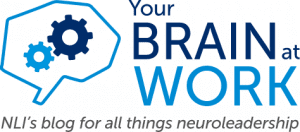By Chris Weller and David Rock According to Gallup, organizations could realize an extra 18% in profit and 14% in productivity by doubling the proportion of employees who feel that...
Read More →

FEATURED INSIGHT
By Chris Weller and David Rock According to Gallup, organizations could realize an extra 18% in profit and 14% in productivity by doubling the proportion of employees who feel that...
Read More →
Speaking up is essential to share ideas, question decisions, and challenge behaviors. Here are a few big ideas that can help any leader raise quiet voices.

Colleges play an important role in bringing diverse groups together. As such, they should make it a priority to create a sense of allyship on campus.

Inclusion is proven to be good for business, but it’s also been shown to afford employees a host of psychological and physical benefits.

There’s a cost to regarding yourself through a fixed mindset. Adopting a growth mindset can help you meet today’s challenges.

We’re not out of the woods yet, and won’t be for a while. So how do we thrive amidst all this? Research suggests there are two things to focus on.

Join millions of employees in creating culture change at scale by reaching out today.

In 2007, David and Lisa Rock and their team had been working in leadership development and executive coaching for ten years, when David coined the term “NeuroLeadership.”ef

North America
Africa
South America
Asia
Europe
Australia
© NeuroLeadership Institute 2025. All Rights Reserved
This site uses cookies to provide you with a personalized browsing experience. By using this site you agree to our use of cookies as explained in our Privacy Policy. Please read our Privacy Policy for more information.